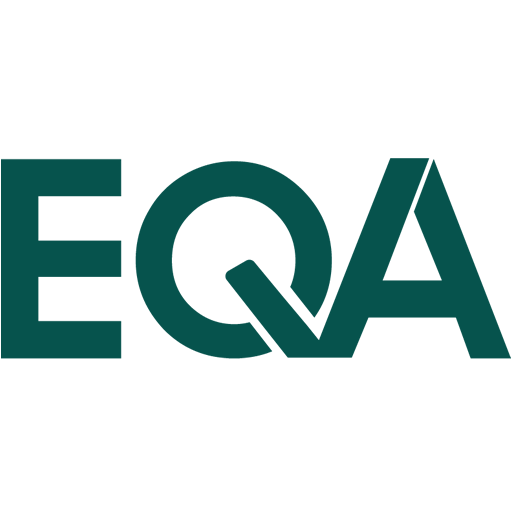
UNE 166002 – R&D&I Management System: R&D&I Management System Requirements
The UNE 166002 Standard has become a benchmark for promoting, managing and improving R&D&I activities.
It provides the requirements to establish, implement, maintain and continuously improve an R&D&I management system, except in chapter 8, which contemplates a series of recommendations in the operational process of R&D&I expressed during the development of the standard as a “should”. It does not prescribe specific tools or methods for R&D&I activities.
This standard is applicable to:
- Any type of organisation, regardless of type (public or private), sector or size.
- Any organisation performing innovation activities regardless of value materialisation, e.g. product, service, process, business model and method.
- Any organisation performing innovation activities regardless of the degree of novelty they focus on, ranging from incremental to radical, as well as research and development activities.
- Any type of approach, e.g. internal innovation, open innovation or user, market, technology or design driven innovation activities.
Benefits of the UNE 166002 Standard
- Greater capacity to manage uncertainty.
- More growth, income, profitability and competitiveness.
- Increased productivity and resource efficiency.
- Improved sustainability and resilience.
- Increased satisfaction of users, customers, citizens and other stakeholders.
- Sustained renewal of the portfolio of offerings.
- Increased ability to attract partners, collaborators and funding.
- Improved reputation and valuation of the organisation.
- Easier compliance with regulations and other relevant requirements.
UNE 166002 certification with EQA
The UNE 166002 certification process with EQA has the following steps:
1. Application for certification.
2. Planning of the initial audit.
3. Carrying out the initial audit, which consists of two phases:
Objectives of Phase I:
- To check that the R&D&I management system is defined and implemented, and has sufficient records to face Phase II with guarantees of success.
- To confirm the innovative nature of the projects carried out.
- Check the typology of R&D&I projects to confirm the validity of the proposed scope.
Objectives of Phase II:
- To gather all the necessary evidence to verify the conformity and effectiveness of the R&D&I Management System in accordance with the requirements of the UNE 166002 standard.
4. If, during the course of the audit, the audit team detects any non-conformity, the organisation shall draw up a corrective action plan to prevent recurrence, together with the evidence of its implementation.
5. Review of the dossier in the Certification Committee.
6. Issuance of the certificate for a validity period of 3 years.
Maintenance of the certificate is conditional on the following process:
- Annual follow-up audit.
- Recertification audit after 3 years.
Frequently Asked Questions
Implementation of the UNE 166002 Standard
The implementation of an R&D&I management system is based on the following principles:
- The generation of knowledge in research and the realisation of value in innovation.
- Leaders focused on the future: both the management and the leaders of the different lines must always focus on achieving the R&D&I Vision that the company has established.
- Strategic management: which must provide the necessary resources to achieve the R&D&I strategy and project towards the Vision established by the organisation.
- Culture: for an R&D&I management system to be effective, it must have the main support based on the commitment of the management and the ability of its leaders to promote innovation capabilities.
- Ideas with purpose.
- The implementation of an RD&I management system can influence the organisation to challenge the status quo, beliefs and its structure, which helps to manage uncertainties and risks more effectively.
- Adaptability to any changes in the context, from which new opportunities may arise.
- The systemic approach: encompassing all the elements of an organisation’s structure, as well as their interactions, leads to greater control of processes.
UNE 166002 Guarantees
The capacity of an organisation to innovate is recognised as a key factor for sustained growth, economic viability, increasing welfare and the development of society.
An organisation’s R&D&I capability includes the ability to understand and respond to changing conditions in its context, to seek new opportunities, to generate and complement knowledge through the creativity of staff in the organisation and in collaboration with external stakeholders.
The organisation can innovate more efficiently if all R&D&I activities and other interrelated elements are managed under the system.
An R&D&I management system guides the organisation in determining its R&D&I vision, strategy, policy and objectives, as well as in establishing the support and processes needed to achieve the intended results.
Contents of UNE 166002
– Chapter 4: Organisational context: includes the analysis of internal and external issues affecting the organisation; the identification of needs and expectations of interested parties; and the definition of the activities and methods comprising the R&D&I management system.
– Chapter 5: Leadership: includes management commitment; the tools to be implemented to promote the innovation culture within the organisation; the formalisation of the R&D&I vision, strategy and policy.
– Chapter 6: Planning: includes the risks and opportunities and the planning of R&D&I objectives.
– Chapter 7: Supporting R&D&I: the resources necessary for the development of the R&D&I management system, including human resources, infrastructure, equipment and materials, financial resources, knowledge management, intellectual and industrial property, and strategic intelligence and surveillance, must be identified, provided and methods established.
– Chapter 8: R&D&I operational processes:
- R&D&I projects: corresponds to point 8.1 of the standard: this point establishes a series of requirements to be taken into account for the development of a project.
- R&D&I process: corresponds to point 8.2 of the standard: in this point, the standard establishes a series of guidelines for the method used for each of the activities comprising an RDI project.
– Chapter 9: Evaluation of the performance of the R&D&I management system:
- Monitoring, measurement, analysis and evaluation. Configuration of the R&D&I management system scoreboard.
- Internal audit.
- Management review.
– Chapter 10: Improvement.
Contact us for more information on UNE 166002
Follow us
Tel. +34 913 078 648